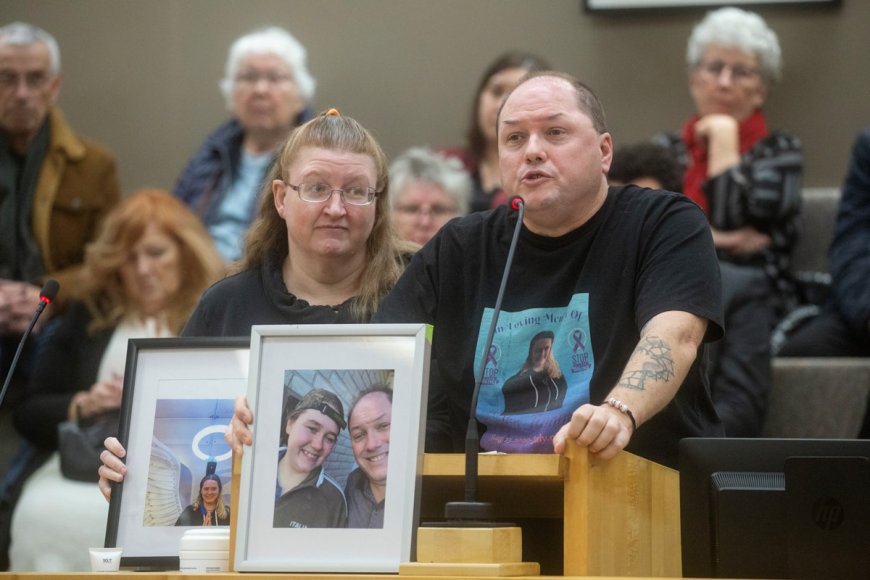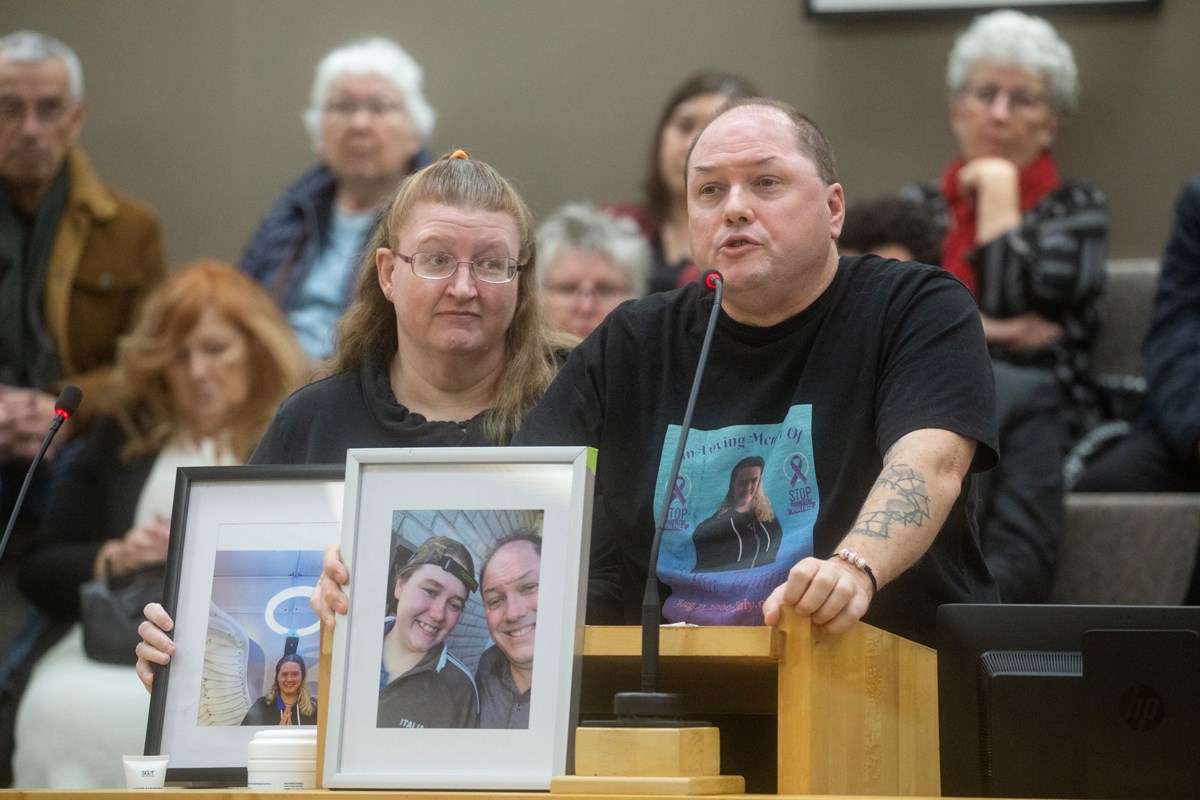Grieving Sault dad travelling to Queen’s Park for debate on intimate partner violence
Grieving Sault dad travelling to Queen's Park for debate on intimate partner violence NotlLocal.com

Sault Man Advocates for Declaration of Intimate Partner Violence as an Epidemic

A Sault man who tragically lost his daughter to intimate partner violence (IPV) last year is taking her story to Queen’s Park this week to participate in the debate on whether IPV should be declared an epidemic. Caitlin Jennings, 22, was found dead in a London, Ont. home on July 5, 2022. The accused, David Norman Yates, a 50-year-old construction worker, was arrested at the scene. The charges against Yates have yet to be tested in court.
Advocacy for Change
In response to his daughter’s death, Dan Jennings has become an advocate for initiatives at all levels of government to address IPV. He established the Facebook group “Caitlin’s Heard” in her name to raise awareness and promote change. Jennings has also urged Sault Ste. Marie City Council to declare IPV as an epidemic at the municipal level. Additionally, he has been actively supporting federal Bill C-332, which aims to include coercive control in the Criminal Code.
Participation in the Debate
This week, Jennings and his wife Michelle will be present in the gallery at Queen’s Park for the debate on provincial Bill 173. The bill consists of a single line: “The Government of Ontario shall recognize that intimate partner violence is an epidemic in Ontario.” Peggy Sattler, an NDP member of provincial parliament representing London West, introduced the bill. Sattler reached out to Jennings after learning about his daughter’s story and requested a statement from him. Jennings intends to use his personal pain to advocate for legislative changes that can prevent IPV from affecting others.
Importance of the Declaration
Peggy Sattler emphasizes that the declaration of IPV as an epidemic is crucial to mobilize resources, policy tools, and government actions aimed at preventing intimate partner violence. The bill is co-sponsored by NDP MPPs Lisa Gretzky, Kristyn Wong-Tam, and Jill Andrew. Jennings’ story, along with the experiences of other victims’ families and survivors from across the province, are being incorporated into the legislative process.
Government Response
Currently, the provincial government has chosen not to make the declaration. Sault MPP Ross Romano, who represents the Progressive Conservative (PC) party, stated that the government is working on prevention and education strategies to combat IPV. Romano referred to the primary definition of an epidemic from the Oxford Dictionary, focusing on a widespread occurrence of an infectious disease. However, he did not acknowledge the secondary definition: “A sudden, widespread occurrence of an undesirable phenomenon.” Sattler argues that intimate partner violence and sexual violence are public health issues that demand attention.
Call for Action
Sattler urges the Ontario government to recognize and acknowledge IPV as an epidemic and take action to prevent it. She highlights that nearly one hundred cities have already made this formal declaration. Sault Ste. Marie declared IPV as an epidemic during a city council meeting in October 2023. Jennings hopes that Bill 173 will receive support from all parties in Queen’s Park.
Jennings emphasizes that IPV has significant medical costs, including hospital visits, injuries, and mental health issues. He urges policymakers to consider the medical aspect of IPV and support the declaration of an epidemic.
SDGs, Targets, and Indicators Analysis
1. Which SDGs are addressed or connected to the issues highlighted in the article?
- SDG 3: Good Health and Well-being
- SDG 5: Gender Equality
- SDG 16: Peace, Justice, and Strong Institutions
The article discusses the issue of intimate partner violence (IPV) and the need for government action to prevent it. This issue is directly related to SDG 3, which aims to ensure good health and well-being for all, as IPV can have severe physical and mental health consequences for victims. SDG 5, which focuses on achieving gender equality, is also relevant as IPV disproportionately affects women. Additionally, SDG 16, which aims to promote peace, justice, and strong institutions, is connected to the issue as it calls for the prevention of violence and the promotion of access to justice.
2. What specific targets under those SDGs can be identified based on the article’s content?
- Target 3.3: By 2030, end the epidemics of AIDS, tuberculosis, malaria, and neglected tropical diseases and combat hepatitis, water-borne diseases, and other communicable diseases.
- Target 5.2: Eliminate all forms of violence against all women and girls in the public and private spheres, including trafficking and sexual and other types of exploitation.
- Target 16.1: Significantly reduce all forms of violence and related death rates everywhere.
Based on the article’s content, the following targets can be identified. Target 3.3 is relevant as it calls for ending epidemics, including intimate partner violence, which is referred to as an epidemic in the article. Target 5.2 is also applicable as it aims to eliminate all forms of violence against women, including intimate partner violence. Finally, Target 16.1 is relevant as it seeks to reduce all forms of violence and related death rates, which aligns with the goal of preventing intimate partner violence.
3. Are there any indicators mentioned or implied in the article that can be used to measure progress towards the identified targets?
- Indicator 3.3.1: Number of new HIV infections per 1,000 uninfected population, by sex, age, and key populations.
- Indicator 5.2.1: Proportion of ever-partnered women and girls aged 15 years and older subjected to physical, sexual, or psychological violence by a current or former intimate partner in the previous 12 months, by form of violence and by age group.
- Indicator 16.1.1: Number of victims of intentional homicide per 100,000 population, by sex and age.
The article does not explicitly mention indicators related to the identified targets. However, to measure progress towards Target 3.3, the indicator 3.3.1 can be used to track the number of new HIV infections per 1,000 uninfected population. For Target 5.2, the indicator 5.2.1 can be used to measure the proportion of women subjected to physical, sexual, or psychological violence by an intimate partner. Finally, for Target 16.1, the indicator 16.1.1 can be used to measure the number of victims of intentional homicide per 100,000 population.
SDGs, Targets, and Indicators Table
| SDGs | Targets | Indicators |
|---|---|---|
| SDG 3: Good Health and Well-being | Target 3.3: By 2030, end the epidemics of AIDS, tuberculosis, malaria, and neglected tropical diseases and combat hepatitis, water-borne diseases, and other communicable diseases. | Indicator 3.3.1: Number of new HIV infections per 1,000 uninfected population, by sex, age, and key populations. |
| SDG 5: Gender Equality | Target 5.2: Eliminate all forms of violence against all women and girls in the public and private spheres, including trafficking and sexual and other types of exploitation. | Indicator 5.2.1: Proportion of ever-partnered women and girls aged 15 years and older subjected to physical, sexual, or psychological violence by a current or former intimate partner in the previous 12 months, by form of violence and by age group. |
| SDG 16: Peace, Justice, and Strong Institutions | Target 16.1: Significantly reduce all forms of violence and related death rates everywhere. | Indicator 16.1.1: Number of victims of intentional homicide per 100,000 population, by sex and age. |
Behold! This splendid article springs forth from the wellspring of knowledge, shaped by a wondrous proprietary AI technology that delved into a vast ocean of data, illuminating the path towards the Sustainable Development Goals. Remember that all rights are reserved by SDG Investors LLC, empowering us to champion progress together.
Source: notllocal.com

Join us, as fellow seekers of change, on a transformative journey at https://sdgtalks.ai/welcome, where you can become a member and actively contribute to shaping a brighter future.







